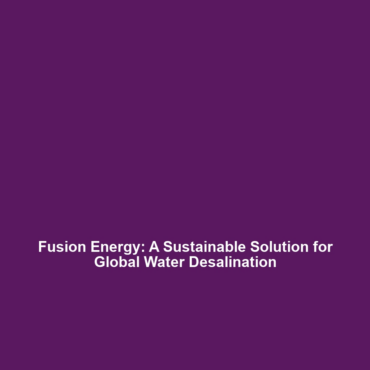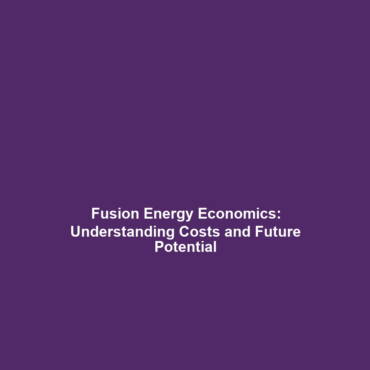High Development Costs in Fusion Energy
Introduction
The pursuit of fusion energy presents one of the most promising avenues for sustainable energy production. However, high development costs pose significant challenges for researchers and investors alike. Projects like the International Thermonuclear Experimental Reactor (ITER) are projected to cost over $20 billion, highlighting the substantial financial investment required to make fusion a viable energy source. Understanding the implications of these expenses is crucial for evaluating the future of fusion research and its role in our global energy landscape.
Key Concepts
To appreciate the significance of high development costs in fusion energy, it’s essential to explore some major concepts related to this field:
1. Fusion Energy Basics
Fusion energy leverages the process that powers stars, where atomic nuclei combine to form heavier nuclei, releasing vast amounts of energy. This process offers a clean and nearly limitless energy source.
2. Major Projects and Investments
Projects like ITER exemplify the financial burden of developing fusion technology. With a budget exceeding $20 billion, ITER aims to demonstrate the feasibility of nuclear fusion as a large-scale energy source.
3. Importance of Funding
Significant funding is critical not only for the construction of facilities but also for the extensive research and development efforts needed to overcome scientific challenges.
Applications and Real-World Uses
High development costs in fusion research are justified by potential real-world applications that promise transformative impacts on energy production:
- Energy Generation: Successful fusion technology could provide a clean, sustainable energy source, reducing dependence on fossil fuels.
- Research Advancements: Innovations stemming from fusion research often lead to advancements in other scientific disciplines, including materials science and plasma physics.
Current Challenges
Despite the promising potential of fusion energy, several challenges must be addressed, including:
- High Initial Costs: The significant investment in infrastructure and research limits funding availability for other energy technologies.
- Technological Hurdles: Developing effective materials and technologies capable of withstanding extreme fusion conditions presents ongoing challenges.
- Long Timeframes: The lengthy timelines required for project development can deter investors and complicate funding efforts.
Future Research and Innovations
Looking ahead, several innovations and areas of research could impact the future of fusion energy:
- Advanced Reactor Designs: Innovations in reactor concepts could reduce costs and enhance efficiency.
- Public-Private Partnerships: Collaborations could provide additional funding sources alongside public investment.
- Small-Scale Fusion Projects: Research into smaller fusion devices may accelerate development timelines and reduce costs.
Conclusion
High development costs in fusion energy research are a substantial hurdle that requires careful consideration and strategic planning. Projects like ITER highlight the need for significant investment, but they also point towards a future where fusion could play a critical role in global energy sustainability. To learn more about the advancements in fusion energy and their applications, visit our articles on current research initiatives and future energy solutions.







